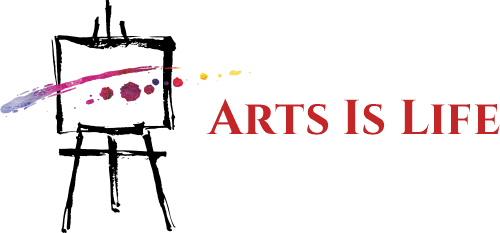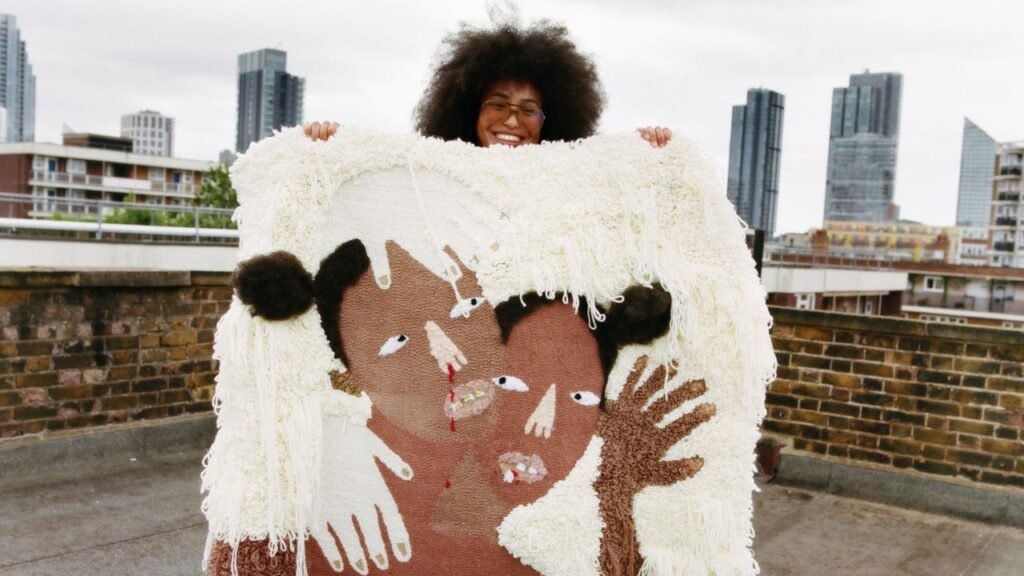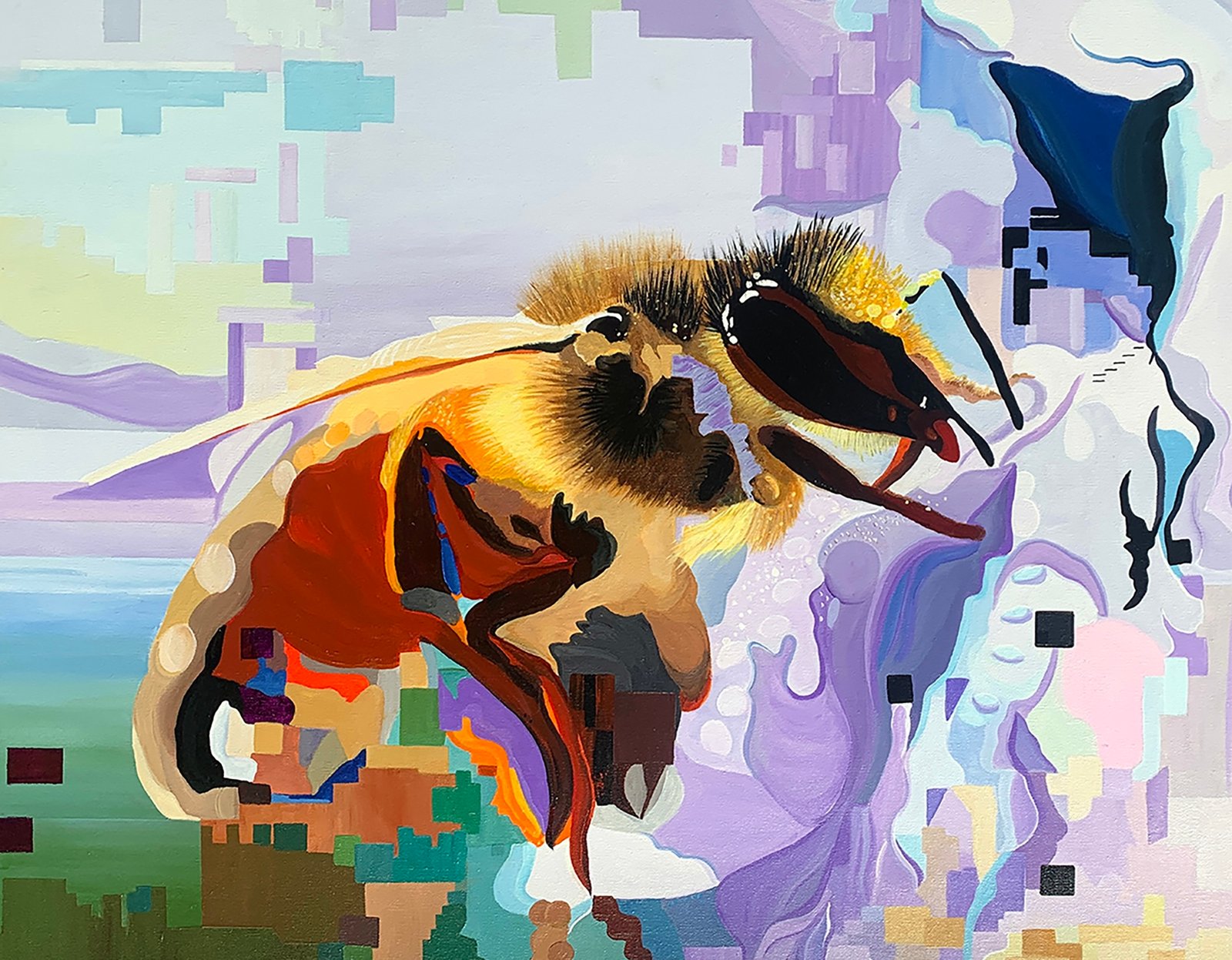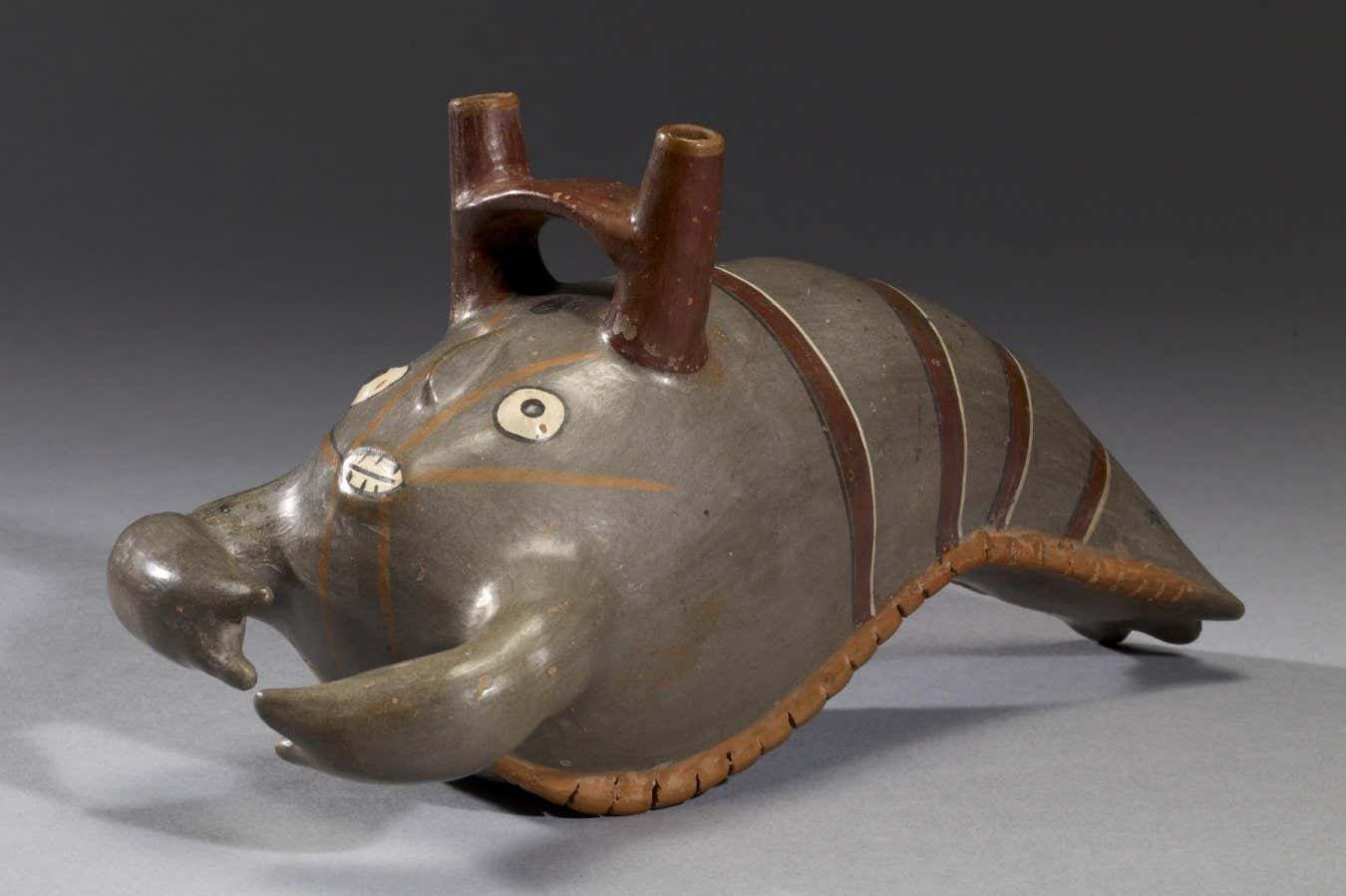There’s a childlike joy in Anya Paintsil’s voice as she virtually walks me through her home, a two-hundred-year-old converted barn in North Wales. “It’s in the middle of nowhere. It doesn’t even show up on Google Maps!” she exclaims, unable to hide her glee at its isolation. “I don’t see anyone except farmers and sheep.”
She shifts her laptop screen to reveal the mezzanine, which doubles up as her studio. I spy tons of yarn, textiles, cloth, random bits of paraphernalia and just stuff – a minimalist Paintsil is not. Wearing a loose brown cardigan over a cream T-shirt, her thick coily hair tucked inside a huge puffy cloud of a silk bonnet, she navigates the low oak beams with jaunty abandon. It is nerve-racking to watch. “Oh, don’t worry,” she says brightly, responding to my concern that she’ll hit her head. “I’m not that tall. It’s just my hair,” she jokes.
Anyone familiar with the work of the celebrated 32-year-old Welsh Ghanaian textile artist will understand that, for Paintsil, hair is much more layered. (“At school I was put in detention for wearing my hair in an Afro. My hair has always been political.”) In her latest show, Allanol Always, at Wrexham’s T Pawb, an arts centre rapidly building a reputation for bold, contemporary work with a local resonance, Paintsil intricately weaves hair – both human and synthetic – into her figurative artworks, using it to explore themes of beauty, identity, race, gender and cultural heritage. The timing coincides with her permanent move from London back to her home town. When she left, well over a decade ago, the idea of returning to Wrexham would have been preposterous. “It was really, really racist. Really terrible. By the time I was 18,” she adds with a wry chuckle, “I was like, ‘I’m not living here ever again. I’m never coming back.’”
Allanol, which translates in Welsh to “outside” or “external”, speaks to the idea of African art as “outsider art” – at least within the dominant narratives of Western art history. Hence Paintsil wanted to use this show to “take liberties and artistic license” with the Black figure. “There is a pressure to depict realistic portrayals of Black people that show a certain opulence,” she explains, her frustration barely hidden. “And,” she quickly adds, “there’s a very obvious and good reason for that: so many depictions of us throughout history have been horrific, so there’s a need to redress the balance. But what I’m interested in as an artist is looking to traditional West African arts and crafts – I grew up with tons in my house – for inspiration and visual language, as opposed to trying to fit in with ideas of opulence that are entirely European and rooting it in European art history.”






